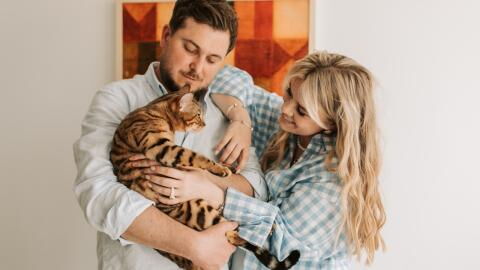Team dry food? Team wet food? You don’t need to choose just one! Find out below how you can feed your cat both.
Discover our latest podcast
What is bi-nutrition?
Cat kibble makes up the largest part of their diet, but it consists essentially of dry food. However, lots of cats don’t drink enough water, which can cause urinary tract infections and kidney failure. This is when the idea of bi-nutrition becomes interesting!
In fact, vets tend to recommend a combination of both wet and dry food quite a lot: a diet split equally between dry and wet food. Wet food makes up for the dryness of the kibble since 80% of it is made up by water!
What are the advantages of bi-nutrition?
There are a few advantages of feeding your cat both wet and dry food.
There is less risk of them contracting a urinary tract infection since wet food makes up for the cat’s ‘lack of water’.
Wet food is also very nourishing and when combined with kibble, it can help your cat feel fuller for longer. This ‘wet and dry’ diet means they eat less, keep fit and stay in shape! Bi-nutrition is also strongly recommended for sterilised cats who normally tend to gain weight after their operation.
This combination also allows cats to experience new tastes and textures. So, if one day their diet needs to be changed (for health reasons for example), the transition will be easier if they are used to a varied diet.
Finally, vets have noticed a better level of physical activity in cats that eat both wet and dry food.
How to introduce bi-nutrition?
According to what type of cat you have, their age and weight, the amount of kibble and wet food will differ. Therefore, it would be better to ask your vet for advice on how to introduce this new lifestyle.
For cats that eat kibble available every day, you can choose to give them wet food whenever you want, in the evening, at noon or in the morning! You will quickly notice that they adapt to this new diet routine quite well.















